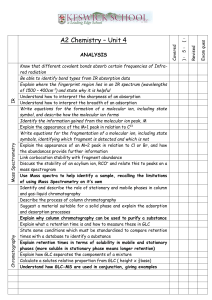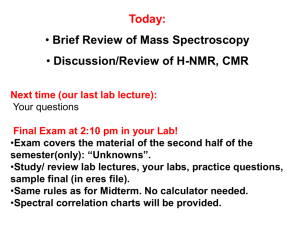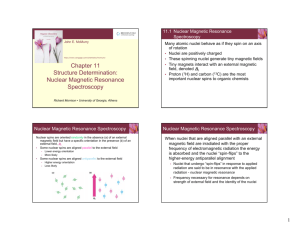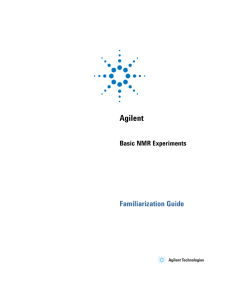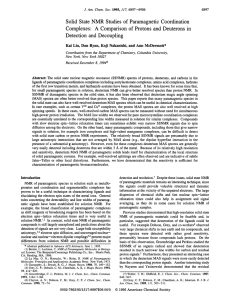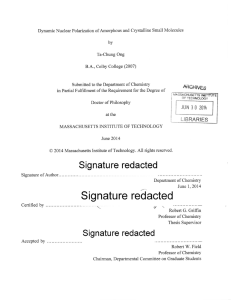Details for Chapter 4
advertisement
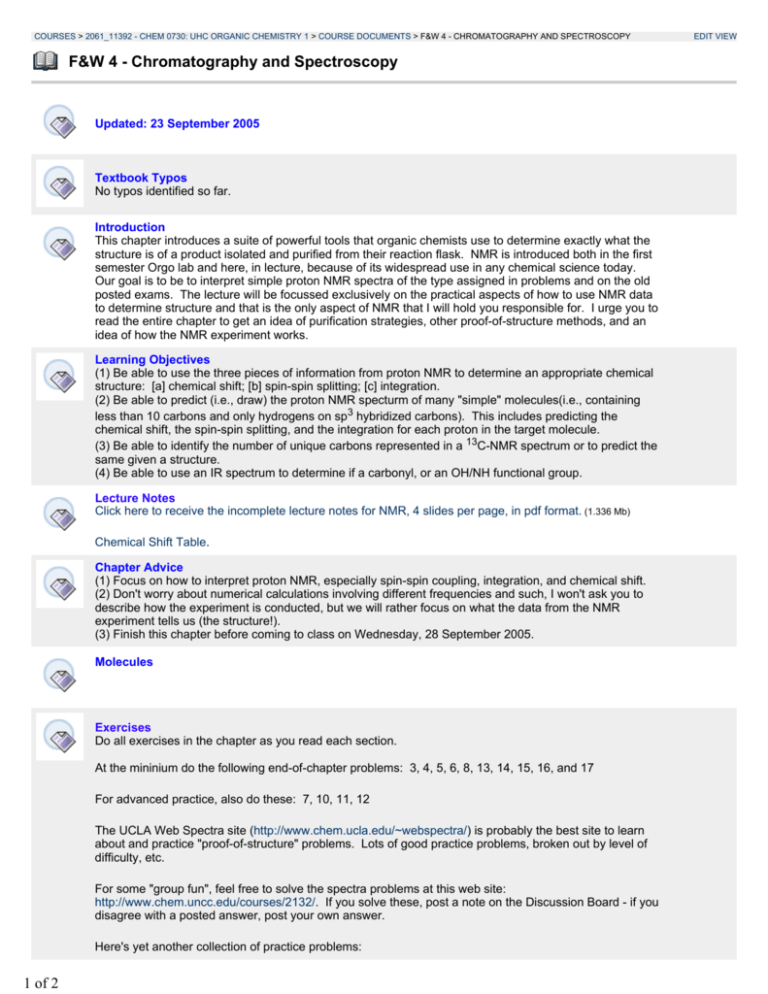
COURSES > 2061_11392 - CHEM 0730: UHC ORGANIC CHEMISTRY 1 > COURSE DOCUMENTS > F&W 4 - CHROMATOGRAPHY AND SPECTROSCOPY F&W 4 - Chromatography and Spectroscopy Updated: 23 September 2005 Textbook Typos No typos identified so far. Introduction This chapter introduces a suite of powerful tools that organic chemists use to determine exactly what the structure is of a product isolated and purified from their reaction flask. NMR is introduced both in the first semester Orgo lab and here, in lecture, because of its widespread use in any chemical science today. Our goal is to be to interpret simple proton NMR spectra of the type assigned in problems and on the old posted exams. The lecture will be focussed exclusively on the practical aspects of how to use NMR data to determine structure and that is the only aspect of NMR that I will hold you responsible for. I urge you to read the entire chapter to get an idea of purification strategies, other proof-of-structure methods, and an idea of how the NMR experiment works. Learning Objectives (1) Be able to use the three pieces of information from proton NMR to determine an appropriate chemical structure: [a] chemical shift; [b] spin-spin splitting; [c] integration. (2) Be able to predict (i.e., draw) the proton NMR specturm of many "simple" molecules(i.e., containing less than 10 carbons and only hydrogens on sp3 hybridized carbons). This includes predicting the chemical shift, the spin-spin splitting, and the integration for each proton in the target molecule. (3) Be able to identify the number of unique carbons represented in a 13C-NMR spectrum or to predict the same given a structure. (4) Be able to use an IR spectrum to determine if a carbonyl, or an OH/NH functional group. Lecture Notes Click here to receive the incomplete lecture notes for NMR, 4 slides per page, in pdf format. (1.336 Mb) Chemical Shift Table. Chapter Advice (1) Focus on how to interpret proton NMR, especially spin-spin coupling, integration, and chemical shift. (2) Don't worry about numerical calculations involving different frequencies and such, I won't ask you to describe how the experiment is conducted, but we will rather focus on what the data from the NMR experiment tells us (the structure!). (3) Finish this chapter before coming to class on Wednesday, 28 September 2005. Molecules Exercises Do all exercises in the chapter as you read each section. At the mininium do the following end-of-chapter problems: 3, 4, 5, 6, 8, 13, 14, 15, 16, and 17 For advanced practice, also do these: 7, 10, 11, 12 The UCLA Web Spectra site (http://www.chem.ucla.edu/~webspectra/) is probably the best site to learn about and practice "proof-of-structure" problems. Lots of good practice problems, broken out by level of difficulty, etc. For some "group fun", feel free to solve the spectra problems at this web site: http://www.chem.uncc.edu/courses/2132/. If you solve these, post a note on the Discussion Board - if you disagree with a posted answer, post your own answer. Here's yet another collection of practice problems: 1 of 2 EDIT VIEW http://orgchem.colorado.edu/hndbksupport/spectprob/problems.html. 2 of 2


